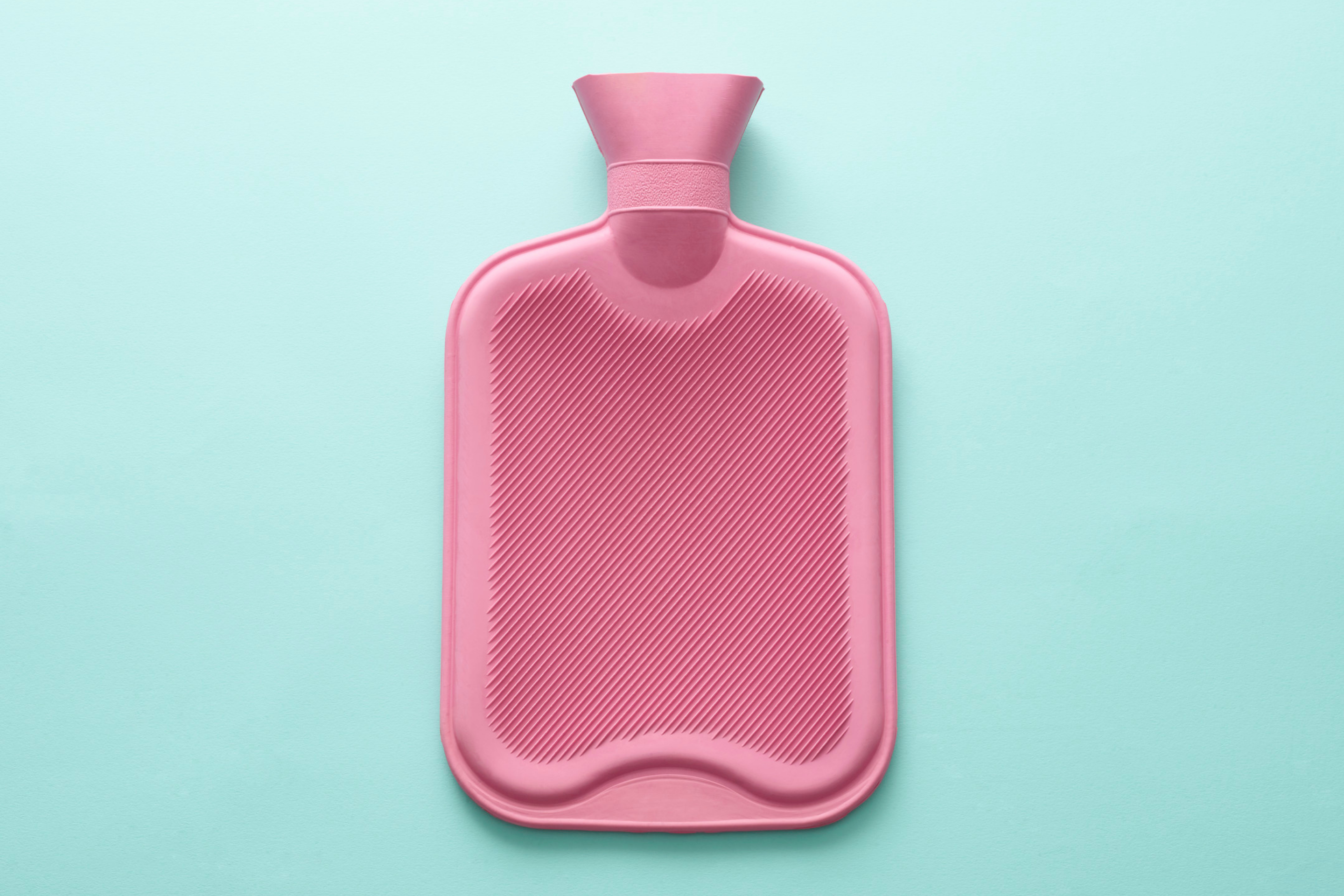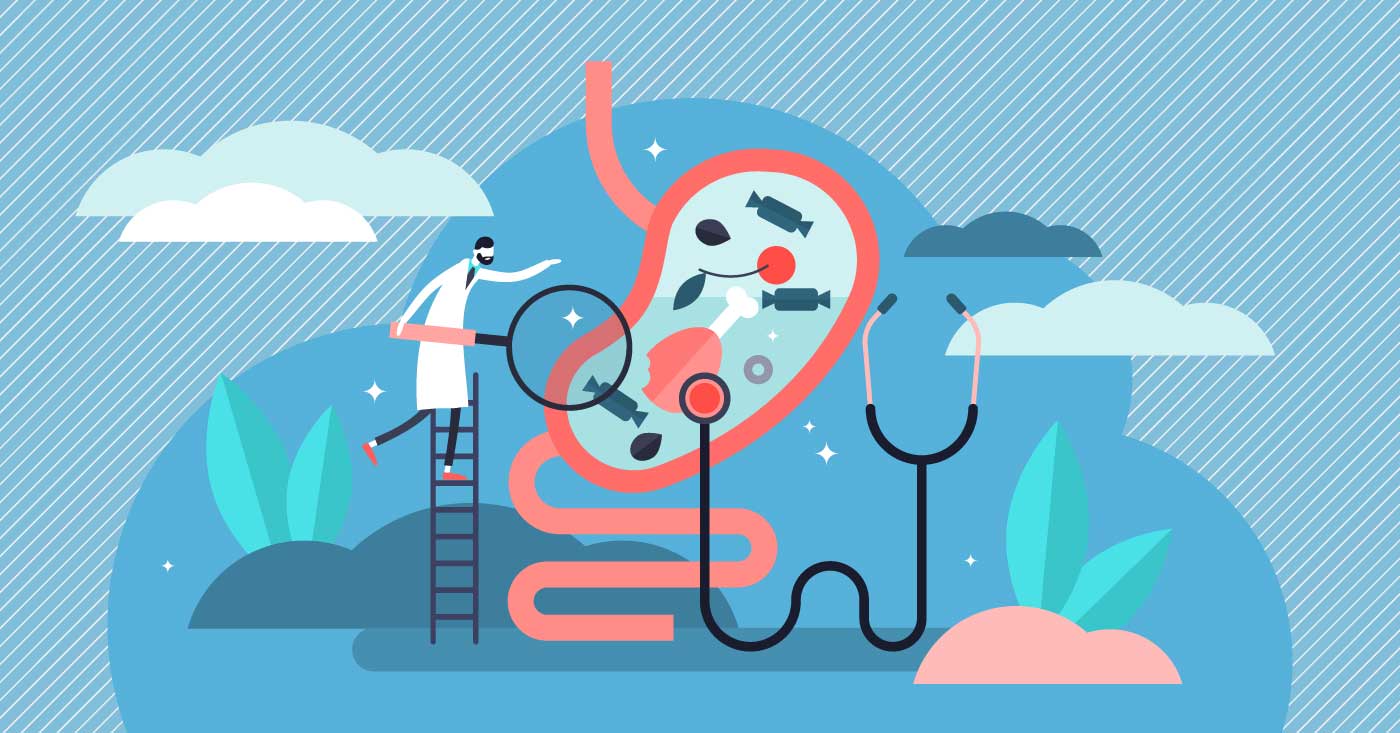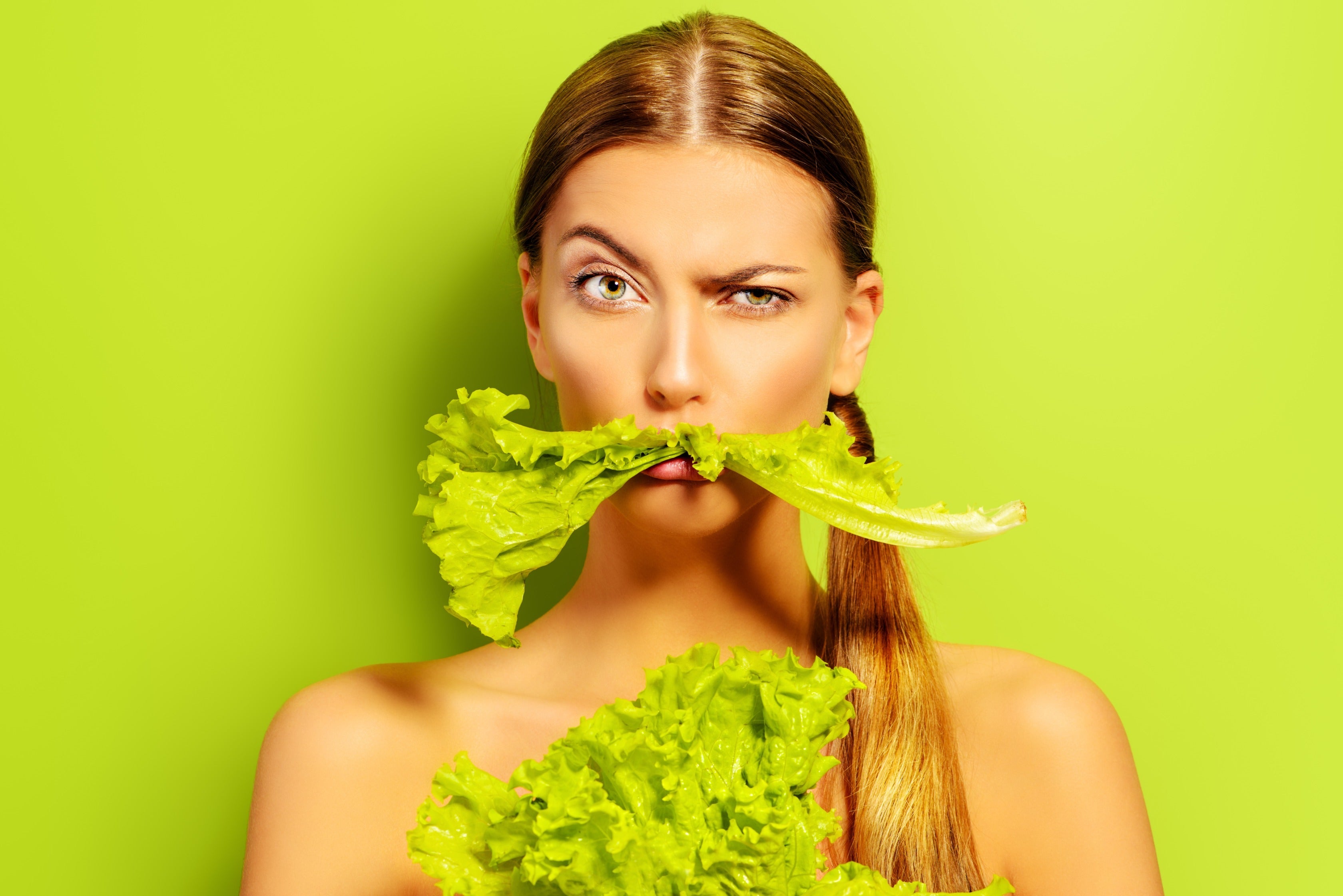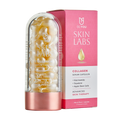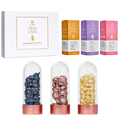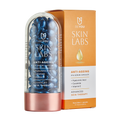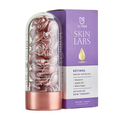Alcohol as Hand Sanitiser
Mar. 22, 2020
The below is a summary of this YouTube video - we thought you might find it useful!
Okay, I thought we'd talk a little bit about how alcohol works as hand sanitiser. So chemists and medical professionals like you guys, many of you guys, at least, will go on to be, we're really on the front line of things like pandemics in terms of our ability to outthink these things. There are obviously a lot of moving parts there. Everybody kind of does their parts, but in terms of the intellectual challenges that you deal with with these things, I think chemists and medical professionals and epidemiologists and stuff are the people who deal with this.
And so I thought it might be interesting to take a look at one of the simpler types of things that you can use to fight this virus, which would be something like a hand sanitiser. And specifically, since we were talking about alcohols, I thought alcohol hand sanitisers be the most relevant. They're certainly the most common, and the only ones that have demonstrated efficacy against the coronavirus. There are other types of hand sanitisers, but if you're trying to protect yourself from the coronavirus, this is probably the smart one to use.
So predominantly, what you'll find in a hand sanitiser is ethanol. If you go and you buy hand sanitiser from the store or something... There's my little hand sanitiser bottle. What you'll have in there will probably be mostly... Let's say... That looks like alcohol. Nice blue colour. I would drink that. You've got about 60% of this is going to be ethanol, and that's the recommended amount to kill the coronavirus by the CDC or the WHO. It's the minimum that you want to have in there. Probably another... I should've saved blue for this, but the other 30% of that... or another 39%, let's say, of that is probably going to be... I don't know. Let's just say the other 39% of that is going be water. And then you'll have another teeny-tiny sliver up here at the top that's going to be 1%, and that's going to be "other." We can talk a little bit about what that is in a second.
But that's just going to be some... Usually, what you have is just a dilute, or not really that dilute, but you have ethanol that's been diluted down with water. Then you have this other teeny amount of stuff in there that I put in quotes, called "other." The 1% "other" is usually... if you're buying hand sanitiser from a store, it's usually a gelling agent in there. Gelling agents are things like gelatin, literally, like when you make Jell-O or something. But usually, for things like this where you're using ethanol, they have something called polyacrylamide, which is a polymer that can thicken inside of ethanol, and it just adds viscosity. Viscosity is just another fancy word for thickness. So if you've taken it out, and it makes that kind of... noise, and it looks like gel, a little bit like a loose Jell-O, that's from the viscosity modifier in there.
Those are typically things like polyacrylamide, and their main purpose is to, one, make it easier to get out of the bottle, because you don't want it to to be super runny. If you've just dumped straight vodka or something on your hands, which is only 40% ethanol, but let's say straight Everclear, which is closer to 95%, how do you just get a little bit on there, and how do you spread it out over your hands? It's kind of complicated. So part of it is just like a practical thing. It makes it easier to spread out. It makes it easier to distribute. But also, it helps to slow evaporation down, which is the other part that you have to worry about, because you need the ethanol to stay on your hands long enough so that it doesn't evaporate off too fast and doesn't kill the virus, right? So there's these two different things that we have to worry about there. That's what the 1% "other" does.
The other thing that you'll usually find in there maybe is some sort of fragrance so it doesn't just smell like burning alcohol, and maybe some sort of other antimicrobial in there that's there to stop, maybe, I don't know, bacteria or something that grow. But generally, that's what you'll see in there. But the workhorse of all hand sanitiser is just ethanol, and you don't really even need water, and probably when you get close to 95% concentration, I doubt anything can live in there, so antimicrobials are kind of pointless anyway. But they are part of the general recipe that the WHO recommends, the W-H-O.
So anyway, that's your hand sanitiser. So it's a relatively simple thing, right? Ethanol's been around for a very long time. The ability to distill it's been around for a very long time. Naturally, people didn't really understand what germs were, so they weren't using ethanol to sanitise things, but in terms of chemistry, this stuff is not super-fancy. So what does it do? This is all it is. What does it do? Why are we able to just rub this on our hands? Or does it do anything? And I think to understand that, you have to start with looking at what a virus is.
So viruses have no real molecular biology machinery. They don't have mitochondria. They don't have any of that kind of stuff. So they can't replicate. They don't have ribosomes, for example. They can't do anything. They're not like a normal cell. Really, what a virus is is it's just some genetic material, either RNA or DNA, and that's what I'm kind of representing here. So for a virus, you would have something like this that would be RNA or DNA, the genetic material. And RNA and DNA, that's just instructions, basically, that tells your body how to make proteins and other things so that it can keep being alive. So a virus has that stuff, but it needs a host organism, like you, to be able to replicate and do all these other types of things that life forms do.
Surrounding it, though... Surrounding a virus, viruses are... If they're on a surface, they don't replicate. It's not like bacteria, where you have to worry about them growing on a surface. They need to get into a person or some other host to be able to replicate. In order to be stable on a surface, and also to find its way into a cell, viruses have some other things. So if you just put RNA on a surface outside, it'll degrade rapidly for a lot of different reasons. And if you tried to just inject RNA into a person, even if it was viral RNA, it's not going to actually get into a cell and start replicating. Your body has immune system, and immune systems can say, "Hey, this isn't my RNA," and it's just going to immediately destroy it. So in order to get into a host, in order to be stable on surfaces, and all these different types of things, viruses have some stuff.
And their first thing that they have is this part that's in red here. And so what am I trying to represent with the red? Probably a better way to represent it... Well, let's start by just saying this is a protein coat, which is literally what it sounds like. It is a coat made of proteins. And what's a protein? Proteins are polymers that are made of amino acids. So one side of that polymer will have a carboxylic acid functional group, and the other side of the polymer ultimately... Excuse me, will have an amine on it. And in between, we have what are called amide linkages. I'm going to run out of room here, so I'll just stop right here. Excuse me.
So a protein, what I've drawn here is just two amino acids that have come together. So we're using the term amino acid. This is the acid part, and then the amine part is right here, and so we call this whole thing... When we take this whole thing together, we would call that an amino acid. When you take these and you polymerize them, meaning take other amino acids and sort of chemically bond them to one another, they're no longer considered amino acids. The main thing that we look at here, the major structural component of a protein, is this linkage. So you'll notice that for this functional group, we have this nitrogen, and then we also have the carbonyl group next to it. Okay? So when you have a carbonyl group with a nitrogen coming off of it like that, we call that an amide, and when you have a whole bunch of amide bonds strung together, we call those peptides. And ultimately, if you get enough of them together, you have what's called a protein.
So here, I've drawn two amino acids linked together, which would be like a little, tiny peptide. But if you kept doing this over and over again, what you would end up with is this very long chain of amino acids that might extend in two dimensions in either direction. So you can imagine taking this here, right, these two R groups or whatever, which are variable, and just extending this on for 1,000 times or something. And what I would end up with is a very, very long chain of amino acids. And these amino acids will fold to form proteins.
So on the periphery here, we've got all these different R groups, and you're in water. And so this thing gets long enough that the intermolecular forces that you usually associate with solvents and things of that nature, like hydrogen bonding, or hydrophobic interactions, meaning two things that don't like water that dissolve in oil prefer to interact with one another, or charge interactions, so a positive part and a negative part. So for example, if I'm in water, this thing will actually be negatively charged over here, and the amine would actually be positively charged. And so if you've got side chains, for example, that have carboxylic acids, there will be carboxylates like this, and maybe over here, off to this side, you might have an amine, and that's going to be protonated like this. And so you can imagine that these guys want to be close to one another, because that's negative and this is positive.
And so they start to fold up on one another so that they can have these interactions. And maybe you've got that, and then maybe in a different part of the protein, you have, I don't know, a hydroxyl group. Those would be in that protonation state. And then, so you can have hydrogen bonding between these. And so they're sort of like instructions programmed along the backbone of these extremely long chains, and those instructions in turn are sort of... printed out in terms of intermolecular forces. So this part of the protein molecule knows to interact with this other part, in a sense. I'm anthropomorphizing these things. And then the part here that's green knows to interact with this part.
And so the thing starts to fold up together, and the result is you get just this big, winding... It looks, if you've ever seen a structure of a protein, if you go and look it up on Wikipedia, it's just this big, winding mess of this molecular chain. And it's just like one long spaghetti noodle that's been sort of tangled up on itself. And inside of it, you have these interactions, right? So maybe the part that holds that, maybe this part of the chain here is held together by this interaction that we highlighted up here, like some charged interaction with positive and negative, and some other part of the chain is held together by hydrogen bonds. And you might have other parts of the chain that are held together by these hydrophobic forces. Oh, I shouldn't use the same colour there. But you'd have others, maybe the hydrophobic force is responsible for that.
And so throughout the molecule, you have these little points of weak bonds that are normally what we think of as intermolecular forces holding this thing, creating this big, globby structure. And so, if you go on to take biochemistry, right, they talk a lot about proteins in that. Basically, proteins are what do all of the work inside of our body. They synthesize all of our DNA, they're part of our blood cells, they build our muscles. Most of the things inside your body are done with proteins, these big, globby things. And so the difference between a muscle protein, let's say, and an immune system protein or something, will be the difference in terms of what these little R groups are off on the side, because as you change those, you change the instructions that tell it how to fold up on itself.
So I'm drawing them like they're just these random messes, but they're not really random. And usually somewhere on the inside of a protein will be a little piece... I'll put it in grey here. There'll be like a little pocket there, and inside of that pocket, it behaves like a little molecular machine, and that molecular machine can do things like, I don't know, harvest energy from sugars and all these different types of things that keep you alive. So proteins are really, really fascinating.
Here, for a virus, they serve less purposes than they would in a big organism like a human. They have a lot less proteins. The protein coat, then, for this... The way I've drawn it here, it just looks like one continuous line, and that is a misrepresentation. What it really looks like is a bunch of different globby things that sort of come together. And usually, all the proteins... I don't know enough about the coronavirus to say exactly what's going on, but it'll be the same protein, or close to the same protein, just repeating over and over again. But you have a handful there. Maybe it's more than one. But it's not like this huge diversity of proteins. Okay? So these all have very similar structures. At least, I don't think it is. I'm sure a virologist or something would know better than I do. But it's not important for the overall lesson here.
But so around the exterior here, you have the proteins, and those proteins, what do they do? Well, they protect the genetic information, one, from being damaged while it's out in the environment, and also shield it from your immune system. So on the outside here, these proteins or whatever that are all folded up will have those little R groups like we talked about earlier sort of facing out into the water or whatever, the blood in your body. These will be facing out.
And what it tries to do is it takes these points along the edges here and tries to make it look as unassuming as possible so your immune system doesn't notice. So it's saying, "Hey, yeah, this isn't foreign RNA or DNA," or whatever is in there. In the coronavirus' case, it's definitely RNA. It's saying, "No, I'm part of the body. I'm just like you." And then ultimately, it goes and it uses those proteins to get into your cell, so it's sort of like this Trojan-Horse-type situation. Right here, at the end of one of the proteins, or some of the proteins, there's going to be something that allows it to... Let's say over here is this big human cell, and this allows it to interact with something on the surface of one of your cells. And your cell's like, "Oh, okay, we know this guy," and it lets it in, and then once it's inside, it starts replicating, and well, you know what happens after that. It progresses to some sort of disease state.
So that's part of how viruses work, is they have this genetic material that's shielded by a protein coat, and then it uses that protein coat to evade your immune system and to ultimately get into your cells. That's what the proteins do. Some viruses, and the coronavirus is one of these, have an additional layer, so they'll have... Sorry, I should also point out, so we have these globby proteins here. They're stuck together. They kind of come together just spontaneously. Let's see, I'll choose this blue colour, maybe. Let's go with lilac. That should show up. What's holding these things together... They're coming together like this. I've got... Let me stop drawing these crazy squiggle things. So just imagine it's a big, squiggly line. But let's say that's a protein. Another protein is going to come in like that, and another one like this, and another one like this, and they sort of just spontaneously come together to form these circular structures. Really, three-dimensional spheres is what the capsid's going to look like.
How can they do that? What's allowing them to know to come in and actually form these spherical coats? And again, it's these side chains that are things like hydroxyl groups or carboxylic acids. Water, carboxylic acids... At pH in the body, carboxylic acids are deprotonated. Or maybe you have an amine that at the pH in body will be protonated. And there are other groups as well, things that are hydrophobic, so sometimes, groups will just look like this. It'll just be some carbon chains.
But these things interact through what we teach you in general chemistry as intermolecular forces, and that's the instructions that say, "Hey, I've got..." I don't remember what colour scheme I used before, but let's say this is like, "I've got a hydroxyl group." If this protein is like, "I have a hydroxyl group," and this one is like, "I have a hydroxyl group, too," those proteins might be happy to come together so that they can form some sort of nice hydrogen bond. So I've got the rest of the protein over here, and I've got this protein over here, but those proteins come together and interact with one another through these intermolecular forces. That's what kind of keeps them together, like hydrogen bonds, or again, the charge-charge things.
So the intermolecular forces not only tell the protein, which would normally, if there were no intermolecular forces, just be a big line, it tells it how I should fold up on myself and do all these things. But even after it's folded up, they'll come together and interact with one another. So each of these proteins is its own two-dimensional folded object. Each of them will come together and interact, again, because of the intermolecular forces, because of these... I should really call them weak forces, or supramolecular forces are what you'll hear them referred to sometimes. So the instructions for a lot of the biochemistry isn't stored in covalent bonds. I mean, there obviously are covalent bonds in our molecules, but most of that stuff happens through these weak bonds, such as hydrogen bonds or charge interactions and stuff like that.
Okay. So we've got this purple stuff here that we're saying is... These are weak bonds here, just hydrogen bonds and stuff like that. They're not super, super strong. It's not like a covalent bond. Covalent bonds are really hard to break. But yeah, that's what's telling it to come together into this sphere. Okay. So we're going to get back to ethanol and how it works as a hand sanitiser eventually, but yeah, we need to build one more thing on the outside here.
So some proteins have, in addition to the capsid coat, they will have another coat on the outside. Let's see if I can cut this. I ran out of room here. They'll have another thing on the outside. On the outside of this, you'll have another coat, and this one's actually kind of interesting. So the outer coat on these will usually be some sort of lipid. Oh, man, I'm not going to be able to draw this over and over again. Let's just make it a colour, and I'll draw what it is off to the side. What colour do we like? What about this pretty green? So on the outside of their protein coat, they'll have another coat. And so this will usually be what's called... Let's call it a lipid coat.
And so what's the lipid coat made of? So in the middle, remember, we have the RNA. These are nucleic acids. They sort of have their own thing... Adenine or thymine, these types of things are in the middle. Then you can go look up what the structure for that looks like. You probably learned about DNA at some point. Now that you have some organic chemistry, you can look at what the molecular structure for that looks like. So we've got that in the middle. And then on the next outer part, we have a coat made of proteins, which we talked about. Those are amide bonds, and they fold up, and they have all these kind of cool intermolecular forces that hold them together. And then finally, on the outside, we have this other thing, which is a lipid coat.
So the lipid coat, which I put in green here, again, it's... Well, so the individual molecules for a lipid coat look something like this. You've maybe heard about this type of stuff before. Let's say that the top part... Actually, what's a good one? We'll use blue for that. So let's say the top part here is blue, and on the back end, we'll have this kind of brown part. So lipids will have a hydrophilic part and a hydrophobic part. So hydrophobic means that it likes to interact with oil, so this interacts with oil, and this likes to interact with water.
And so your cell membranes, like the cell membrane of any cell, is made of lipids. And there's different types of lipids, but they all more or less look like this. They have some group on the front that's hydrophilic and some group on the back that's hydrophobic. And so hydrophilic groups are things like I was talking about before, like things that can hydrogen bond or things that are really polar. Things that dissolve really easily in water. And so usually, like in a cell or something, you have what are called phospholipids. And so on the front, for the hydrophilic part, what you'll have is... Excuse me. I need to get more sleep. But yeah, on the front, what you'll have is some sort of phosphate group or something like that. It really doesn't matter that much.
But the main thing to recognize, though, is that this part here is going to be charged. So maybe it also has the ability to hydrogen bond, or it's some sort of sugar, something that's very, very soluble in water. And on the back here, you have what is literally, usually, a fat, or what you would consider a fat, like if you went and got olive oil or something like that. This would be a component in there. And so these things are usually just straight carbon chains that look like this. [inaudible 00:24:09]. Sometimes they'll have double bonds in them, so it might look like that. And then on the front end here, we have this phosphate group or something that is very hydrophilic, so that can interact with the water.
Okay. So what happens, though, is again, we're kind of relying on intermolecular forces for these things to come together. The hydrophilic portion will stick out in to the water. So you can imagine that coming out all the way around to form this envelope. And then the hydrophobic part, naturally, doesn't interact with the water, and so that has a tendency to associate on the inside, like this. And so you end up with interactions here between these things that I'm highlighting in grey. Those are, again, hydrophobic interactions. For us, we would call those van der Waals forces, or something like that, between the hydrophobic [tains 00:25:22] that are on the tail. And on the front part here... I'll just use the green for that. Between these, it's these hydrophilic interactions, hydrogen bonding, charges, and stuff like that. And the reason that this prefers to stick out in to the bulk water is that because they are hydrophilic and they have hydrogen bond acceptors and stuff, there's interactions between water and that surface that lowers the energy of the system.
So it gets pretty complicated, right? Even just in terms of talking about the chemistry, and you have to remember that viruses are probably some of the least common things that we see out in nature. These are much, much less complicated than an E. coli cell, for example, which is also pretty simple relative to a human being. So you get some idea of why it's so difficult to design drugs and things.
But before the virus gets in the body, though, it's not that hard to kill, because once it's in the body, you have to worry about not killing the host, right, which can be difficult. But when it's outside of the body, it's like, "Well, I can just throw bleach on the virus and kill it, whereas I can't just inject myself with bleach once it gets and my body and kill it." It becomes a much more difficult thing to get enough selectivity to kill off the virus.
But so this second coat is this lipid coat. It's fats. Sometimes it'll have some proteins and stuff sticking into it as well to help with getting into cells, but the main thing here is that if we want to kill the virus, we have to somehow get rid of... So think about it like this. The RNA and DNA of the virus, even though that is kind of the dangerous part that tells the virus how to go into your body and attack it, basically, and use it to keep replicating itself, but it can't get into your body if it doesn't have its protein coat and it doesn't have its lipid coat, right? So it needs its lipid coat. It needs its protein coat. If you can get rid of those, and you just get it down to where it's just bare RNA and DNA, your immune system can fight it off, or just something in the environment, like the sun or RNase from some other animal or something, will degrade it.
So that brings us to, how does ethanol work? So ethanol has a hydrophilic part and it has a hydrophobic part. So look at water, right? If we compare water, which is a good comparison for alcohol, because they both have hydroxyl groups on them, I've got a hydrophilic part, but instead of having the carbon chain that's hydrophobic that I've highlighted over there in that brownish colour, I've just got another hydrogen there, right? So water is naturally, of course, the most hydrophilic thing you can have. It's water. What is it going to want to interact with? Other water molecules.
But ethanol can interact with water. That's part of the reason you can dissolve it in water, or why I can take ethanol and I can mix it with water, because it has this head group that can interact with the water. I can do that. I can form hydrogen bonds and stuff. That's why if I take ethanol and mix it with water, the two things are miscible. It's almost exclusively from that interaction. This interaction back here, though, water doesn't do a very good job with that. And if you look at really long-chain alcohols that have a lot of carbon chains on them, like 10 or 15 carbon chains on them, they're not soluble in water at all. Because at that point, the back end of the molecule starts to dominate the intermolecular forces, and the little bit of hydrogen bonding you get isn't enough to compensate. But ethanol, because it's a small molecule with a small carbon chain on it, can interact with water no problem. So that part makes sense.
So I take that, and now I'm rubbing... I've got the virus, let's say. I went outside and I touched a door handle that someone had sneezed on, and now I have the virus on my hand, and I don't know it, obviously, because I can't see molecules. But just to be safe, I pull out some hand sanitiser and I put it on my hand to kill the virus. So what is happening there? Yes. This is the part that I think we've going [inaudible 00:29:52] this video for quite a while now, but now we're at the point where we can kind of understand how it actually kills the virus.
What it does is, because it shares... Remember this thing that we talked about in general chemistry, or you'll hear it in organic chemistry a lot? It's that like dissolves like. And the idea is just that if you have something that has similar intermolecular forces to... Let's say you have a solvent like water, and you want to see something that will dissolve in water. You're going to put things in water that look like water, things that are polar, or things that can hydrogen bond. And if you have something that is just a fat molecule, so let's say something like this, like I just have some big hydrocarbon or something like gasoline, what's going to dissolve in there? Well, it's going to be other things that look like it. It's going to be other hydrocarbons. Maybe I can get benzene or something in there. But generally, it's going to be things without a lot of functional groups on them that would make them polar.
Ethanol and lipids are interesting, because they have both parts, right? They have the part that can interact with water, and they have a hydrophobic part, so they're kind of living between worlds. And when we put ethanol in with the virus, the ethanol can disrupt the intermolecular forces between the lipid coat and also over here between the viral coat. So the interesting thing, I guess... So these parts are susceptible to being disrupted by intermolecular forces.
So remember back earlier when we first started talking about this, I said, "Well, how does a protein..." Oops. If we have a big, linear piece of protein like this, how does it know to fold up on itself? Well, it's got instructions sort of programmed into the backbone, and those instructions might be in the form of hydrogen bonding, or it might be in the form of carboxylic acids. It can be in the form of a bunch of different things, and that tells it how to fold up on itself.
And then we also know that the proteins know how to assemble to form the coat through intermolecular forces as well. So maybe one of my proteins has a carboxylate hanging off the side, and another protein has an amine that's protonated hanging off the side, and now they know to come together. That's what the instructions are. It says, "Hey, let's come together and hang out," and that allows them to kind of come together in this ring like we've drawn up here in red. So got this ring here that's in red. And it's the intermolecular forces that are telling these proteins, "Hey, get into this specific order. Form this nice sphere," right?
All right. Those instructions are... If you think about it like a programming language, almost, right? Those instructions are written to run in a very specific operating system. If I try to run these intermolecular forces, these instructions, in a different solvent that's not water, they don't make any sense. It's just like if I try and run a program that's written for Windows on my Mac. That program doesn't make any sense in the Mac. Even though the instructions themselves make sense on Windows, they basically make no sense whatsoever on my Macintosh computer, and that's because the operating system is different. The way that the instructions are being read is just different altogether.
And so that's what happens with ethanol. If you change the operating system, okay, suddenly these instructions aren't going to make any sense anymore. Let's say in water, if you've got... So let's look at the... The hydrophobic interactions are actually the more interesting ones. Let's say you have a hydrophobic interaction between two side chains. So I'm going to take that. So remember, these are van der Waals forces, the hydrophobic interaction. And so I've got one chain that looks like this, and it's interacting with a second chain, and let's just say that other chain looks... Let's just do the same one, right? And then whatever, I've got my protein over here, and I've got my protein over here.
So these two things are interacting through van der Waals forces, and they're real happy to do so. The strength of that interaction is going to be very dependent on the solvent. If I have water there, right, the water doesn't really interact with the hydrophobic side chains at all, because there's nothing to interact with. What is this? I've got this big hydrophilic piece here that can offer up... It's a hydrogen bond acceptor. I can donate hydrogen bonds. But when I look the hydrophobic side chain, what do I have on here? I just have a bunch of C-H bonds. They're not polarized. They can't interact with water at all. So water's just kind of hanging out. It's not really interacting with those at all, and it allows this interaction here between these to be very strong. It's not really competing with those at all, because it has nothing to compete with. There's no hydrogen bonding surface or anything on those two side chains.
But if I switch from water, which is the operating system the virus is made to operate in... I'm sorry, that's the operating system, yeah, that the virus is made to run in, to... You'll have to excuse my computer programming. If I'm using those terms wrong, I'm sorry. But yeah, now I've changed the operating system. I've changed the software environment, and now it's not really designed to work in that, and what happens is... Oops. What happens is these side chains that are hydrophobic now can start to compete. Whereas before, with water, there was no competition, because water doesn't really want to interact with a bunch of C-H bonds. But now I've got other things that are hydrophobic that can come in, and that's what ends up happening. So now the ethanol molecule can stick its hydrophobic piece in there, and now it's starting to break up these interactions here.
And so what can happen is, if I've got two proteins, let's say, and they're interacting, let's say, through their hydrophobic side chains... I'm just going to put it as a circle here. And they're perfectly stable, and they're ultimately like, "This is great, we're hanging out, all we have to do is wait until Dr. Dragna touches his mouth or rubs his eye or something, and then we're going to get in him. We're going to infect him." But I have good habits, let's say, and pull out my hand sanitiser, and I put it on. My hand sanitiser has this hydrophobic stuff on it.
So remember, the proteins, they're forming a circle. They're sort of holding hands, right? And they're doing it through these different types of interactions, let's say the hydrophobic interactions. Well, now what will happen is the ethanol will come in, and it kind of stops these guys from holding hands, pretty much. So they were having a really strong interaction there, but because I have tons of ethanol that I've just kind of flooded this system with, now the ethanol starts competing for those same interactions.
And so the original instructions that I had that said, "Hey, virus, this is how you hold together," well, now, those instructions don't really make any sense, and the proteins don't know how to come together. So my proteins are just like, "Well, I don't know what to do. I had this little piece out here that I was using to stick to the other proteins." Before, right, they could come together, and they knew to form a sphere, whereas now, they don't know how to form a sphere anymore, because their place where they would get the hydrophobic interactions with is being sort of blocked by the ethanol.
And so the protein coat, if we come back, if we look at our protein coat on the inside, we can start to just break up these interactions between these. And by disrupting that, right, now the coat's gone, and the nucleic acids, or the RNA or whatever on the inside, is now exposed to the environment and can be destroyed. So for viruses that just have a protein coat, that's what happens.
Something very similar happens with lipids. This is why ethanol just has this broad antimicrobial property. And you can imagine that it's just a very similar thing. It's actually a little bit simpler to think about, because proteins are pretty complicated. Molecules are these big, 2-D, folded things with all these different types of interactions. But with a lipid interaction, the lipid, remember, the instructions, the intermolecular forces that are the instructions to tell it to interact with water, to keep the head group out into water, are at the head, and this part down here is the hydrophobic part. And it knows how to follow those instructions in water. It says, "Well, you know, I'm just going to let water interact with this part, and we're going to form sort of a..."
They kind of link together themselves, and they have this broad shield that just interacts with water molecules. That's what I'm indicating over here with this blue scribble. That's the bulk water. And then on the back end, though, what they have is this hydrophobic tail, and there you have this interaction between those via these van der Waals forces, and that tells it to sort of come together into this nice, spherical shape that offers yet another coat that can protect the genetic information on the inside.
Ethanol, of course, is not like water. Water doesn't really have any way to interact with this back part down here. For the same reasons that we talked about earlier, there's no hydrogen bond donors or acceptors. It's not very polar. So water can't really get in there, and that's why the instructions are as they are, because organisms live in water, and it's expecting to go in water. And so it should be able to just keep water out of that lipid layer and keep it on the outside, but if I use ethanol, now, the ethanol is like, "What's up, man? I can interact with both of these things."
So I can get an ethanol molecule that comes in, let's say... Let me erase some of this stuff over here. I can get an ethanol molecule in there. So now I have an ethanol molecule, let's say it sticks its head in there, and it's got this part here. And now, just like before, I can start to break up some of these interactions between the... Oops. I can break up some of these interactions between the lipids, not only between the heads, because I've got this hydroxyl group that's sort of buttressing in there and sort of forcing its way between them, but also on the tail end, I can start out-competing. I can get a whole bunch of different ethanol molecules to come in there and out-compete for those van der Waals forces, and the result is those intermolecular forces... Little carried away with the... Let me go back. There we go. Those intermolecular forces... I should draw that one in, too. Those intermolecular forces get out-competed between the lipids, and the result is that I will have a well-solvated lipid that doesn't have the ability to form this protective shield anymore.
So the hydrophobic parts of the lipid that before could come together because they knew to stay away from the water are now well-solvated by ethanol, by its tail... [inaudible 00:42:34] do a better job of drawing that. So I can have a whole bunch of those solvent molecules come in and interact with it that way. So it's keeping it solvated on that side, and on the front end, I can have ethanol interacting with the head group.
I'm not sure if you guys can hear my son in the background crying, making me very sad. Okay. So yeah, these hydrophilic groups on the front can dissolve the lipids and stop them from interacting, so now, whereas before, they knew to come together like this because they had the instructions programmed in, well, we've disrupted those instructions. Okay? They no longer have the ability to form this sort of unified front of hydrophilic head groups and hydrophobic tails. We've effectively broken that up. So what made sense in water now no longer makes sense down here in these ethanol molecules. These are all the ethanol. Oops. Can put a little pink dot. That's ethanol, that's ethanol, that's ethanol, that's ethanol, that's ethanol.
So the ethanol comes in and disrupts the lipid bilayer by just effectively dissolving it. So ethanol does both of these things. It breaks up this coat. So it gets in between here and breaks up all these interactions, and what ends up happening ultimately is that now, okay, I've got this DNA now. Once I break up the coat or whatever, the DNA is just kind of hanging out, or whatever the genetic information is, just hanging out now. And once the genetic information is out like that, even if I accidentally touch my mouth or something, that doesn't have any way to penetrate into my cells. Because remember, it needed those proteins to get into my cells. It needed that lipid bilayer, probably also to help get into my cells, and it needs those things to protect itself from my immune system. So it won't be able to get into my cells, and my body will know, my immune system will say, "What the hell? This is foreign DNA," or, "This is some foreign RNA," and just immediately mount an effective immunoresponse against it.
So how does ethanol, then, kill things? It's not really that complicated. All it does is dissolve away... The really short answer for this is, how does... So if I wasn't teaching to you guys, who know some organic chemistry at this point, and we were just to say, "Well, how does ethanol... What's its antimicrobial properties?" What you would say is, or what I would say is that maybe I would explain how a virus looks and say, "On the inside is the genetic information, and then it's protected by two different coats along the outside, its lipid coat, and then on the inside, it's got a protein coat. And what does ethanol do? I think an easy way to think about it is, well, it just dissolves away the two coats. Okay? So once I add ethanol, it just gets rid of these. It dissolves these away, and then I'm just left with this genetic information in the middle, and then my immune system knows how to handle that, and it's not a big deal." Okay?
Soap is also broadly antimicrobial and works in a very similar way, right? Soap has a hydrophilic part and a hydrophobic part. It can disrupt the protein capsid... I mean, sorry. It can disrupt the protein coat. It can disrupt the lipid coat as well. It has the added benefit that it will wash those things off of your skin. So whereas if you just rub hand sanitiser on your skin, even if the virus is there, the dead virus is going to be stuck on your hand, whereas soap will interact with your skin, and once you rinse it off, it'll rinse it all away. And so soap is actually more effective, but it's much less portable.
But yeah, that's how hand sanitisers work, and ethanol's the common one, but you could really any kind of small-chain alcohol. So isopropanol is the other one. And the higher the concentration of ethanol, generally the more deadly it will be to the virus on a shorter time scale. So 60% is the minimum, but there are some viruses that won't actually be killed by it. Coronavirus is one that will be killed by it, but if you look at polio or something like that, the poliovirus, which thankfully we don't really have to worry about in the United States, it is stable with 60% ethanol. You actually have to use 95% ethanol to disrupt its capsid coat. And so you can kind of think about why that might be, stronger intermolecular forces or something like that. But yeah, all of the broad antimicrobial activity of ethanol, whether it be for viruses or for bacteria or something like that, stem from its ability to dissolve and sort of rewrite or confuse the intermolecular forces, this information that's stored in these weak interactions in biomolecules.
Anyway, I hope you guys found that interesting. Yeah. I'll leave it here, as fun as this stuff is to talk about.
What are you waiting for? Click here to buy hand sanitiser for you, your workplace, your home, or even get some sent to your loved ones


